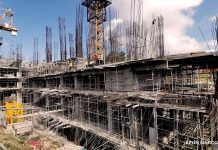Energy Secretary Alfonso Cusi called on investors to consider both conventional and renewable energy sources to address the country’s socio-economic needs.
In an essay published on the South China Morning Post on March 22, Cusi said that a technology-neutral approach is required for the Philippines to find a balance between environmental mandate and socio-economic progress.
“Technology-neutral means that we shouldn’t be constrained by rigid or arbitrary targets in sourcing our energy,” he said. “Both conventional and non-conventional sources must be considered, but this shouldn’t be equated with abandoning climate action.”
He said conventional energy sources, like coal-fired power plants, can be made more sustainable. He cited approaches in China, India and Japan, which the Philippines is trying to replicate.
Considered one of the world’s most efficient coal plants, the Shanghai Waigaoqiao No. 3 power plant in Shanghai, China houses two 1,000-MW supercritical coal-fired power plants that use 230,000 tons less standard coal and emit 480,000 fewer tons of carbon dioxide annually. The plants’ sulphur and nitrogen oxide emissions are reportedly well below national limits for coal-fired plants.
Japan, on the other hand, has also allowed investments into ultra-supercritical coal plants that require less coal to produce energy, generate less carbon dioxide, and meet emission standards.
Cusi pointed out that renewable energy, particularly for a developing country like the Philippines where there are no subsidies, remains unaffordable, compared to conventional energy sources.
The inherent intermittent nature of renewable energy sources, on the other hand, creates risks of power outages that hinders progress and turns off investors, he said.
“In Asia where one in seven persons lack access to basic electricity, the balance between promoting socio-economic growth and combating climate change is an extremely fine one for governments,” he said.
He said that governments have a responsibility to the people to reduce poverty and encourage investments while allowing further economic growth, and one way to achieve these goals is to prioritize reliable and affordable power.






